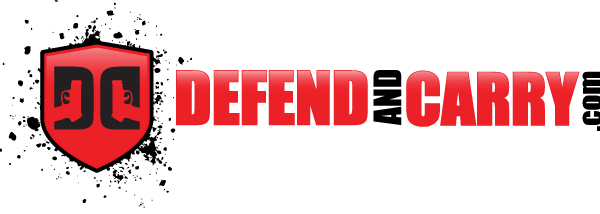Pro’s And Con’s Of Reloading Your Own Ammo For Your EDC
As concealed carriers who practice on a regular basis, we’ve undoubtedly felt the pain of ammunition costs. Sometimes we just bite the bullet (proverbially) and buy in bulk. Sometimes we cut corners with ammunition quality and go surplus. But what about the possibility of making your own ammunition that you use for your everyday concealed carry handgun?
In this article, we explore the good, the bad, and the ugly of reloading our own handgun ammunition.
Ammunition Reloading Tools – What Do You Need?

Manufacturer’s Manual & Data
Bullet reloading IS an exact science. Creating rounds that are overpressurized unintentionally or aren’t sealed properly can lead to weapon malfunction or worse. Having the right data that covers YOUR press, your powder, your shells, and your primers is all crucially important.
Single-Stage Press
Starting off – and on a limited budget – you’re probably going to get a single-stage press. It’s more tedious but at this stage in the learning, it’s probably more cost-efficient than getting a multi-stage press with all the bells and whistles and costs a fortune.
Shell Plates
Shell plates keep the shells together as you’re working on them. Keeping them in batches can help you do your own version of quality control/quality assurance. Shell holders and shell plates may not work for all the calibers you want to refill so make sure to shop accordingly.
Dies
Dies come in four basic varieties: sizing, neck-expanding, bullet-seating and crimping (if necessary). Each one is important to ensure that the round is properly reconstructed at each phase of the reloading process. Missing one die may limit or severely constrain your bullet-reloading process.
Case neck brush
If it’s a spent shell, it needs to be scraped clean with a bore brush before you can refill it.
Case lubricant
A case lubricant reduces wear and tear on your casings, your dies, and your press. Don’t skip this piece.
Additional absolutely essential tools:
- Primer tray
- Powder scale – This isn’t an “let’s eyeball it and see” process.
- Priming tool – The tool you will use to reload the primer.
- Adjustable powder scoops
- Loading blocks – Reduces the chance you’ll double-load a batch of ammunition because you’re moving the entire block through the reloading process.
- Caliper – Measuring a bullet to ensure it meets the constraints of your pistol is important.
- Deburring tool – Sharp edges and little metal fragments begone!
- Bullet puller – If you forgot to load powder in your bullets, you’ll need a bullet puller to get the ball out.
- Vibratory cleaner – If you plan on using cases over and over again, you’ll need one of these to clean off the burnt powder. Also available in ultrasonic versions, as well.
Some reloading systems incorporate many of these elements into a single series of tools or functions but make sure you have all of these aforementioned items before you start reloading.
Overall, you’re looking into investing upwards of $5-10K easily on the bare essentials to get into manufacturing your own bullets. Worst yet, you’re responsible for their performance.
The Good: Self-Reliance
 Producing our own ammunition gives us a sense of pride and joy. Each round we successfully fire is one more reason to learn to refill it. Ammunition is a finite resource and being able to safely load and fire reloaded ammunition is just one more reason to try.
Producing our own ammunition gives us a sense of pride and joy. Each round we successfully fire is one more reason to learn to refill it. Ammunition is a finite resource and being able to safely load and fire reloaded ammunition is just one more reason to try.
The Bad: A Bad Round Could Get You Killed
 Double-charged a round? How about forgot to fill it with powder? If you’re not willing to commit the time and absolute attention to detail necessary to make a service-worthy batch of rounds, you are literally risking your own life. Worse? It could jam your concealed carry handgun and definitely author your demise.
Double-charged a round? How about forgot to fill it with powder? If you’re not willing to commit the time and absolute attention to detail necessary to make a service-worthy batch of rounds, you are literally risking your own life. Worse? It could jam your concealed carry handgun and definitely author your demise.
The Ugly: A BIG Time Commitment
 No matter which way you go – fancy upscale loading press or simple single-stack – there is going to be a severe learning curve and a lifelong improvement to committing to those rounds. You’ll have to fight complacency, your urge to watch a movie or do something more interesting, and maybe even your disinterest with learning new tools in order to become a proficient bullet reloader.
No matter which way you go – fancy upscale loading press or simple single-stack – there is going to be a severe learning curve and a lifelong improvement to committing to those rounds. You’ll have to fight complacency, your urge to watch a movie or do something more interesting, and maybe even your disinterest with learning new tools in order to become a proficient bullet reloader.
Do the pros outweight the cons? Are the bads worse than the goods? Ultimately, you decide.
